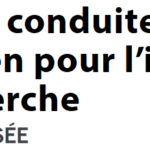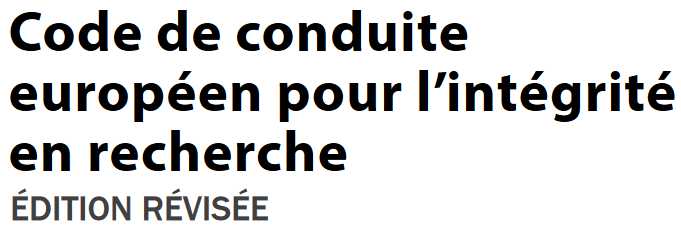Le peer review, ou relecture par les pairs, sert à valider les travaux avant publication.. mais le peer review dysfonctionne ! Parmi les singularités mal explorées : "est-ce que les rédacteurs en chef, les membres des comités de rédaction publient plus facilement dans leur revue, voire dans la revue d'amis rédacteurs en chef ?". La réponse semble être OUI dans la plupart des cas. Quelques revues auraient une procédure pour prise en charge de ces articles, mais beaucoup de comités traitent cela en famille : je te relis ton article et tu reliras le mien, et ainsi un peer-review existe !
Ivan Oransky, sur le blog RetractionWatch le 8 avril 2015, cite le témoignage d'une chercheuse dans le domaine de l'autisme avec des noms de revues qui acceptent en 48 heures les articles du rédacteur en chef ou d'autres membres des comités.. sur son blog, elle cite un auteur (rédacteur d'une revue) dont 32 articles ont été acceptés en 1 jour (domaine de l'autisme), et d'autres auteurs qui se sont cités entre eux pour faire monter leur H index……et les commentaires sont très explicites…. Semble assez répandu dans la plupart des disciplines…. Il existe des clubs de reviewers…. Parmi les 400 chercheurs qui publient le plus, la plupart sont rédacteurs en chef ou membres de plusieurs comités de rédaction… Nous n'avons pas de données factuelles sur ce phénomène….




Un commentaire
Bonjour,
Très intéressant billet sur les conséquences du verrouillage éditorial (voir Baccini & Barabesi, 2010). Voici quelques études qui peuvent apporter quelques éclairages sur la question posée : « est-ce que les rédacteurs en chef, les membres des comités de rédaction publient plus facilement dans leur revue, voire dans la revue d’amis rédacteurs en chef ? »
Cordialement,
Guillaume Cabanac, université de Toulouse
@gcabanac
——————————–
Aguinis, H., de Bruin, G. P., Cunningham, D., Hall, N. L. Culpepper, S. A., & Gottfredson, R. K. (2010). What Does Not Kill You (Sometimes) Makes You Stronger: Productivity Fluctuations of Journal Editors. Academy of Management Learning & Education, 9(4), 683–695. http://amle.aom.org/content/9/4/683.abstract
Abstract: « We tested competing hypotheses, based on learning and job burnout theories as well as autobiographical case studies, regarding the careerwide research productivity of 58 past editors of six journals over a 50-year period (i.e., approximately mid-1950s to mid-2000s). Our study included editors of Academy of Management Journal, Academy of Management Review, Administrative Science Quarterly, Journal of Applied Psychology, Journal of Management, and Personnel Psychology. Results indicate important fluctuations in the research productivity of editors such that, on average, their research output peaks during their editorship period, and it decreases sharply immediately after the editorship term. Although there is a productivity recovery period, it subsequently takes at least a full decade for the editors’ research productivity to reach their pre-editorship level. We discuss implications for aspiring editors as well as the field. »
——————————–
Baccini, A. & Barabesi, L. (2010). Interlocking editorship. A network analysis of the links between economic journals. Scientometrics, 82(2), 365–389. doi:10.1007/s11192-009-0053-7
Abstract: « The exploratory analysis developed in this paper relies on the hypothesis that each editor possesses some power in the definition of the editorial policy of her journal. Consequently if the same scholar sits on the board of editors of two journals, those journals could have some common elements in their editorial policies. The proximity of the edi- torial policies of two scientific journals can be assessed by the number of common editors sitting on their boards. A database of all editors of ECONLIT journals is used. The structure of the network generated by interlocking editorship is explored by applying the instruments of network analysis. Evidence has been found of a compact network con- taining different components. This is interpreted as the result of a plurality of perspectives about the appropriate methods for the investigation of problems and the construction of theories within the domain of economics. »
——————————–
García-Carpintero, E., Granadino, B. & Plaza, L. M. (2010). The representation of nationalities on the editorial boards of international journals and the promotion of the scientific output of the same countries. Scientometrics, 84(3), 799–811. doi:10.1007/s11192-010-0199-3.
Abstract: « This paper analyses the nationalities of the editorial board members of the top 20 journals (according to their impact factor in the ISI Journal Citation Report, Science Edition 2005) serving 15 scientific disciplines. A total of 281 journals were analysed (some journals crossed disciplinary boundaries) and 10,055 of their editorial board members were identified. Some 53% of board members were from the United States. Europe provided 32%, with the United Kingdom making the greatest contribution (9.8%). The analysis of scientific output by nationality in these journals showed a significant correlation, in all disciplines, with the representation of the corresponding nations on the editorial boards. The composition of editorial boards may therefore provide a useful indicator for measuring a country’s international scientific visibility. The present results should be taken into account in the design of national policies with the aim of enhancing the presence of a country’s most prestigious scientists on the editorial boards of the main international journals. »
——————————–
Kim, J., & Koh, K. (2014). Incentives for Journal Editors. Canadian Journal of Economics/Revue Canadienne D’économique, 47(1), 348–371. doi:10.1111/caje.12077
Résumé : « Motivations des directeurs de revues. Les chercheurs peuvent devenir directeurs de revues parce que ce rôle peut engendrer plus de citations de leurs propres travaux. Ce mémoire montre empiriquement que les publications d’un chercheur sont davantage susceptibles d’être citées dans une revue qu’il dirige. On teste deux hypothèses à savoir si les directeurs exercent de l’influence sur les auteurs pour citer leurs travaux (soit en pressant les auteurs – hypothèse de pression du directeur – soit en acceptant les articles qui font référence à leurs travaux – hypothèse de sélection du directeur) à l’aide d’une analyse des mots-clés et des références (forward citation) respectivement. Les résultats ne supportent ni l’une ni l’autre des hypothèses, ce qui laisse l’auto-sélection du chercheur comme une cause possible de l’effet-directeur. »